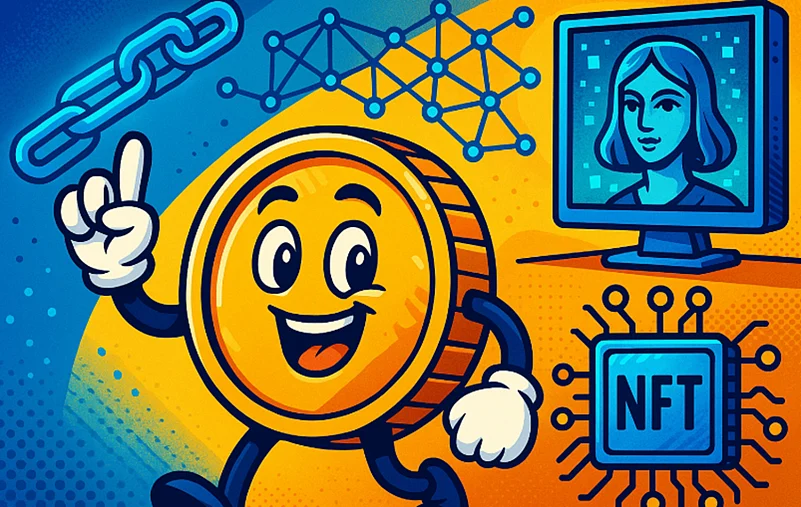In the ever-evolving digital world of today, a revolution is quietly altering the manner in which we create, disseminate, and conserve art. In the amalgamation of two revolutionary technologies—artificial intelligence (AI) and non-fungible tokens (NFTs)—a new mode of expression is being revealed. AI-driven NFTs are not just a trend; they are revolutionizing the very nature of creativity, ownership, and value in the digital world. This blending is changing what is possible for an artist, how a work of art may be created, and who may own some piece of digital heritage.
The Evolution of Digital Art
Digital art itself existed for decades, but it was not until the NFT craze that it hit its peak of mainstream popularity. These single digital art pieces, created through blockchain, allow artists to monetize their art as tokens that guarantee authenticity, scarcity, and secure possession. Artists were able to sell their digital art as currency for the very first time in human history in a way that mirrors how traditional art markets work.
But NFTs themselves are not the solution to the artistic conundrum that many artists are faced with. That is where AI comes in. With the powers of machine learning, neural networks, and data-driven algorithms, AI can now assist—or even drive—the creation of art that is visually compelling, conceptually interesting, and entirely unique.
What Are AI-Enhanced NFTs?
AI-generated NFTs are works of computer art produced or co-created by machine intelligence. They can be made through algorithms that learn from thousands of image sets so they can "learn" style, look, and pattern. Models can generate original images based on text and evolve into new forms, making them living pieces evolving with use.
As soon as such AI-created works of art are produced, they can be tokenized in the form of NFTs so that each of them becomes a unique, blockchain-verified digital asset. What one then owns is a combination of technology and imagination—an artwork that is at once human imagination and machine ingenuity.
How AI Is Transforming Creativity
The role of AI in computer art is not that of replacement but of partnership. Artists now employ AI software as artistic partners, providing them with ideas, themes, or visual prompts, and then refashioning the machine's output to convey their message. Such a collaborative strategy allows for experimentation on a scale and pace never before conceivable.
AI makes it easier for new digital artists as well. Individuals without technical or even artistic training can now employ their imagination on simple AI platforms. This is democratizing art, making it more accessible to a broader diversity of voice and perspective in the digital art community.
The New Frontier of Ownership and Interaction
AI-powered NFTs also introduce new forms of experiencing and possessing art. Some art evolves in response to user input or outside data streams. Think about possessing a digital portrait whose expression is altered based on weather forecasts or a visual story that reads differently to every reader. Interactive NFTs dissolve the line between artist and owner, turning ownership into an interactive experience.
Blockchain locks down each iteration, update, and transaction on the NFT in unalterable and verifiable form. This transparency and traceability offer a degree of trust and provenance previously out of the question for digital media.
Ethical and Creative Considerations
With hyper-innovation comes great debate. As artificial intelligence takes an ever more central role in creation, questions of authorship and originality are gaining momentum. Who is truly the artist—the coder, the AI, or the individual who coded it to create? Beyond this, copyright concerns, data acquisition, and artistic integrity must be carefully weighed as the map is constructed.
Then there is the ecological cost of NFTs, specifically energy-guzzling blockchain-based ones. With that, however, as more sustainable blockchain platforms and more efficient consensus algorithms emerge, the carbon footprint of minting and trading NFTs is being tackled increasingly.
Conclusion: A Glimpse into the Future
AI-generated NFTs are an exciting marriage of art and technology. They stretch the boundaries of what can be qualified as creativity and hold open the doors to limitless experimentation. As exciting as it might be to dream of this cyber renaissance, it's certain that art will be increasingly fueled in the future by intelligent and decentralized networks.
As technology advances and NFTs grow more accessible, artists and collectors are entering a new world—one where creativity is shared, ownership is interactive, and art is as fluid as the digital environment around us.














